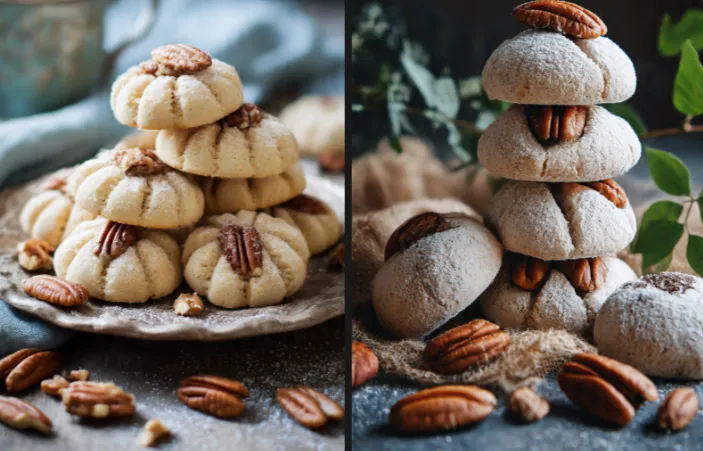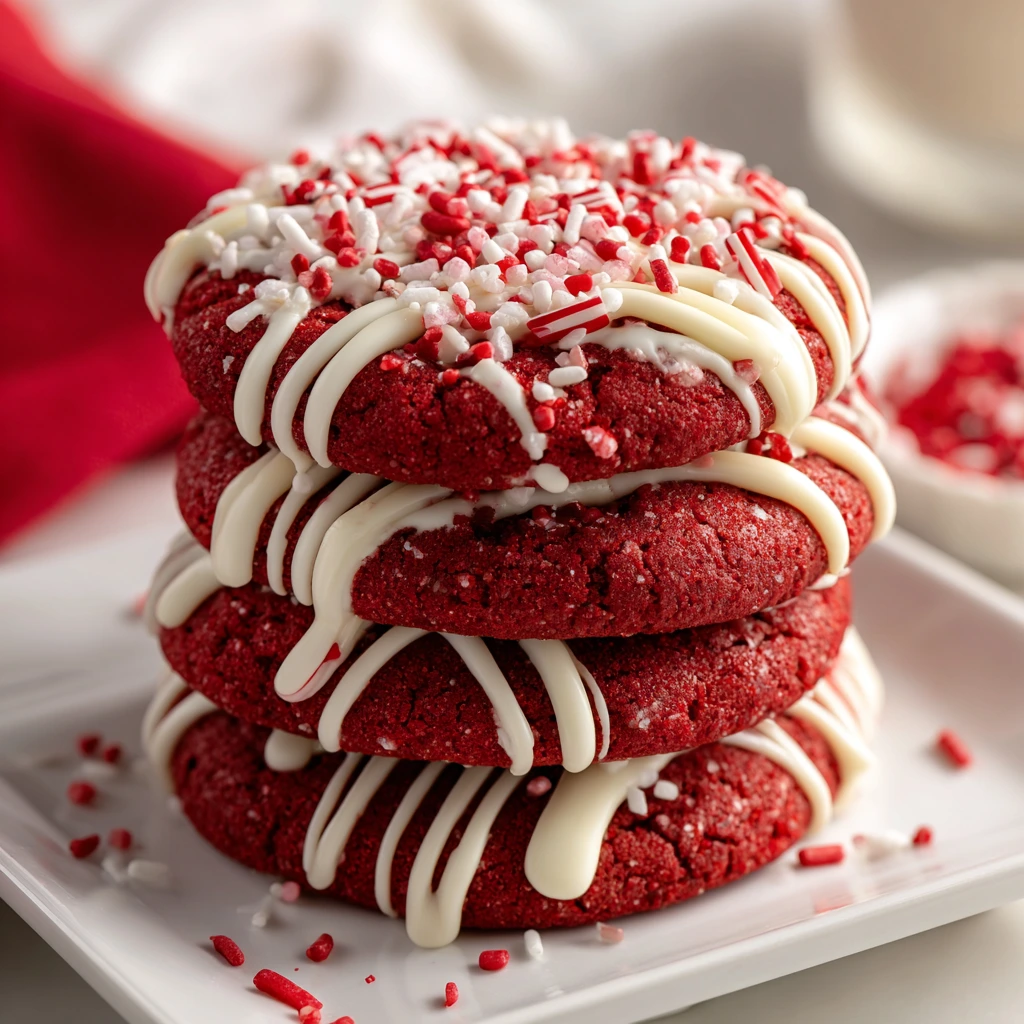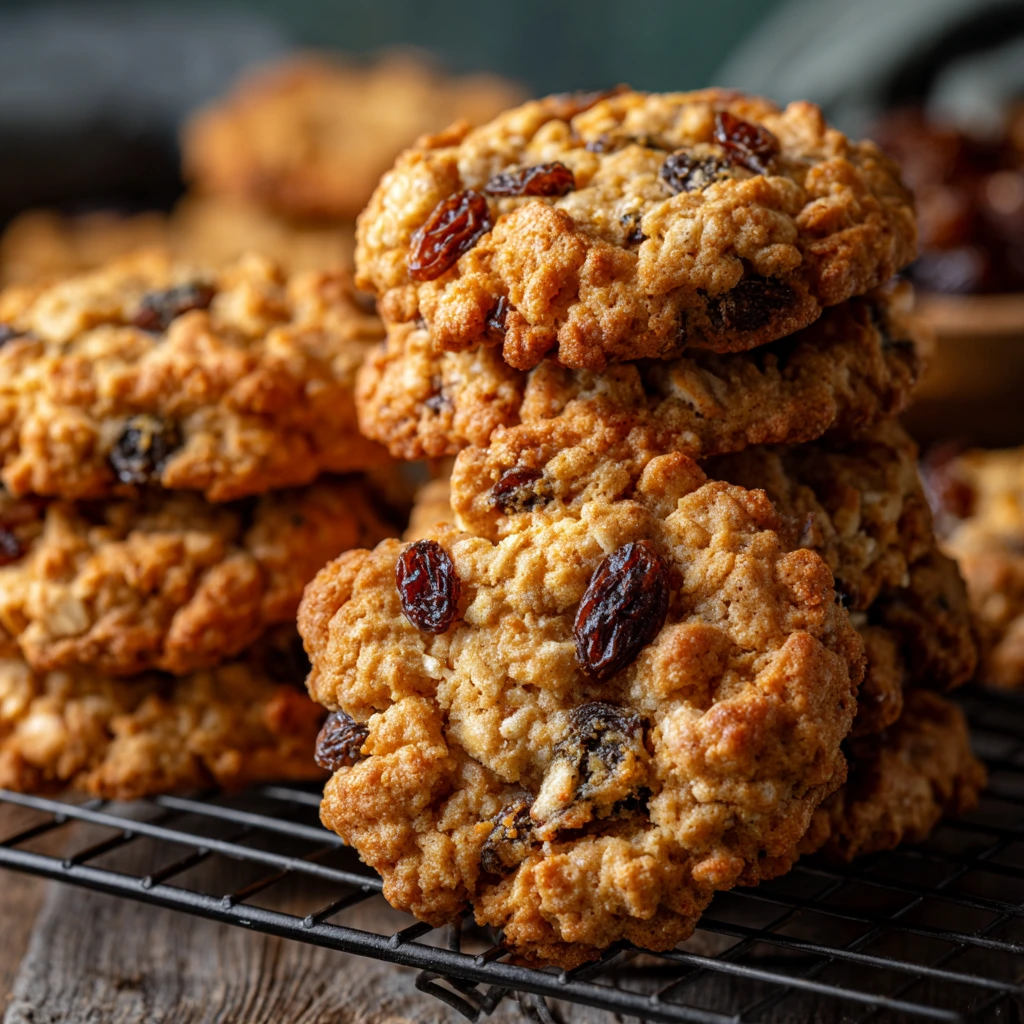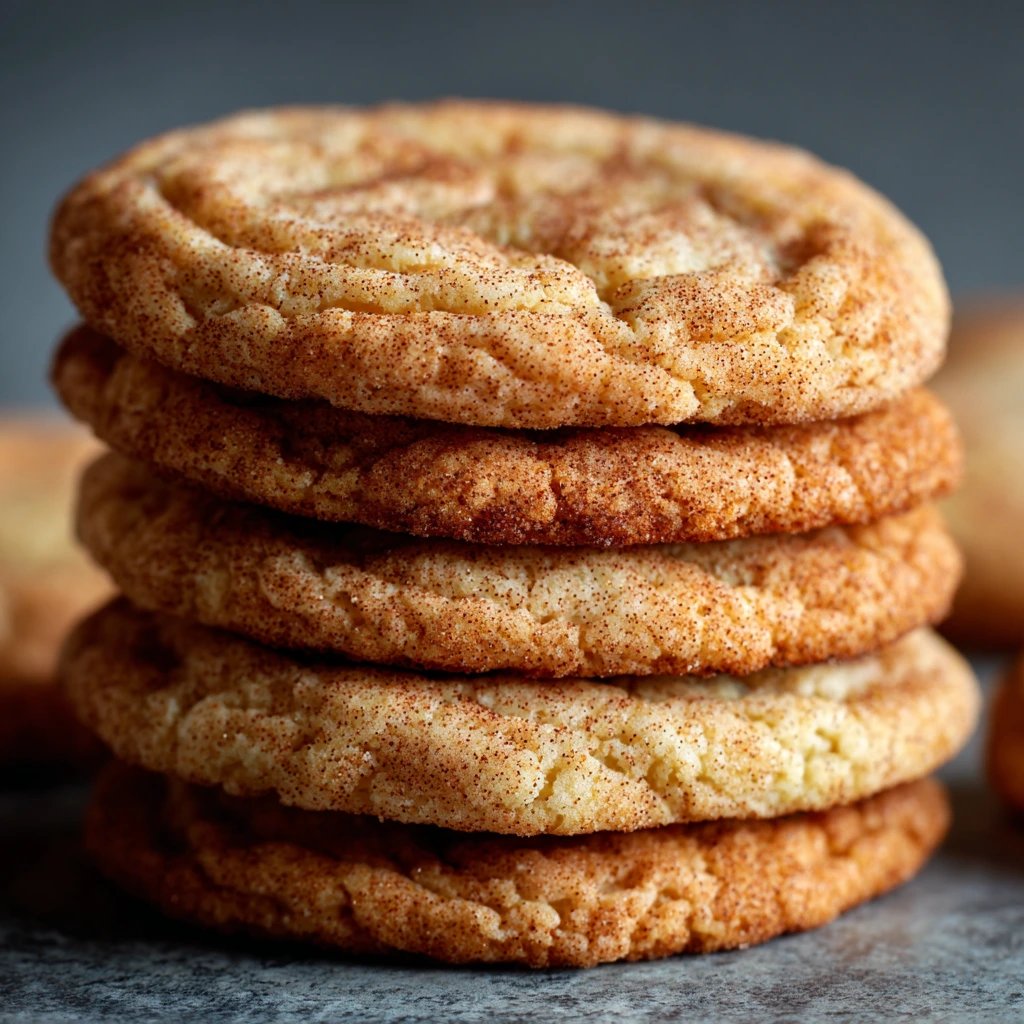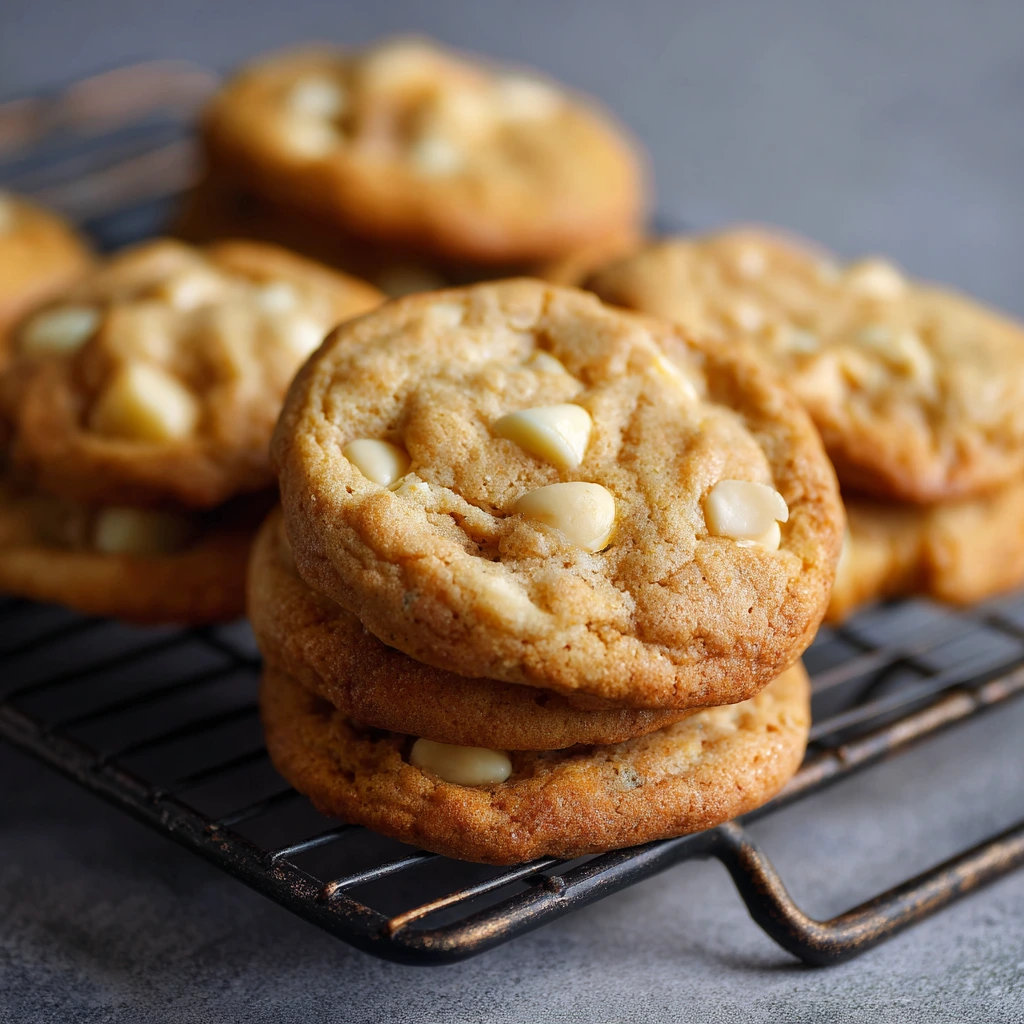Pecan sandies are a timeless classic — buttery, nutty, and delicately crisp. These cookies combine the richness of shortbread with the earthy flavor of toasted pecans, creating a treat that’s both simple and sophisticated. Their crumbly texture and melt-in-the-mouth quality make them perfect for tea time, dessert platters, or as homemade gifts during the holidays.
The Essence of Pecan Sandies
Pecan sandies are a type of shortbread cookie made with butter, sugar, flour, and finely chopped pecans. The name “sandies” comes from their sandy, crumbly texture, which is achieved by using a high ratio of butter to flour. The pecans add a nutty depth and a subtle crunch that perfectly complements the buttery base.
These cookies are often associated with Southern baking traditions, where pecans are a staple ingredient. However, their appeal is universal — they’re simple to make, elegant to serve, and deliciously satisfying.
Why Pecan Sandies Are So Special
Pecan sandies stand out for their balance of flavor and texture. The buttery richness melts on the tongue, while the toasted pecans add warmth and complexity. They’re not overly sweet, making them ideal for pairing with coffee or tea.
Their simplicity is part of their charm. With just a few pantry staples, it’s possible to create cookies that taste like they came from a bakery. They also store beautifully, making them perfect for gifting or preparing ahead of time.
Ingredients and Their Roles
Butter: The foundation of the cookie, providing richness and a tender crumb.
Sugar: Adds sweetness and helps create a delicate crispness.
Flour: Gives structure and the signature sandy texture.
Pecans: Add nutty flavor and a pleasant crunch.
Vanilla extract: Enhances the flavor and aroma.
Salt: Balances the sweetness and brings out the buttery notes.
Step-by-Step Recipe for Pecan Sandies
Ingredients (makes about 24 cookies)
- 230 g (1 cup) unsalted butter, softened
- 100 g (1/2 cup) granulated sugar
- 1 teaspoon vanilla extract
- 1/2 teaspoon salt
- 250 g (2 cups) all-purpose flour
- 120 g (1 cup) finely chopped toasted pecans
- Optional: extra pecan halves for decoration
Preparation
- Toast the pecans: Preheat the oven to 175°C (350°F). Spread the pecans on a baking sheet and toast for 6–8 minutes, until fragrant. Let cool, then chop finely.
- Cream the butter and sugar: In a large bowl, beat the butter and sugar together until light and fluffy. Add the vanilla extract and salt, mixing until combined.
- Add the flour: Gradually add the flour, mixing on low speed until a soft dough forms. Stir in the chopped pecans.
- Shape the cookies: Roll the dough into 2.5 cm (1 inch) balls or shape into logs for slicing. Place on a parchment-lined baking sheet, spacing them about 5 cm (2 inches) apart. Flatten slightly with your fingers or the bottom of a glass.
- Chill the dough: Refrigerate for 30 minutes to help the cookies hold their shape.
- Bake: Bake at 175°C (350°F) for 15–18 minutes, until the edges are lightly golden.
- Cool: Let the cookies cool on the baking sheet for 5 minutes, then transfer to a wire rack to cool completely.
Tips for Perfect Pecan Sandies
- Use room-temperature butter: It should be soft but not melted for the best texture.
- Toast the pecans: This enhances their flavor and adds depth to the cookies.
- Don’t overmix: Once the flour is added, mix just until combined to keep the cookies tender.
- Chill the dough: Prevents spreading and helps maintain the shape.
- Cool completely: The cookies firm up as they cool, developing their signature crispness.
Variations to Try
Pecan Sandies with Powdered Sugar
Roll the cooled cookies in powdered sugar for a snowy, melt-in-the-mouth finish similar to snowball cookies.
Chocolate-Dipped Pecan Sandies
Dip half of each cookie in melted dark or milk chocolate and let set for a decadent twist.
Maple Pecan Sandies
Add 1 tablespoon of pure maple syrup to the dough for a subtle sweetness and aroma.
Brown Sugar Pecan Sandies
Replace half of the granulated sugar with brown sugar for a deeper, caramel-like flavor.
Gluten-Free Pecan Sandies
Use a gluten-free flour blend to make these cookies suitable for everyone.
Serving Suggestions
Pecan sandies are perfect for any occasion. Serve them with tea, coffee, or hot chocolate for a cozy afternoon treat. They also make a lovely addition to dessert platters, especially during the holidays.
For a festive touch, arrange them in decorative tins or boxes lined with parchment paper. Their elegant simplicity makes them ideal for gifting — a homemade treat that’s both beautiful and delicious.
Storage and Make-Ahead Tips
Store pecan sandies in an airtight container at room temperature for up to 10 days. For longer storage, freeze the baked cookies for up to 2 months. Thaw at room temperature before serving.
The dough can also be made ahead and refrigerated for up to 3 days or frozen for up to 3 months. If frozen, thaw in the refrigerator overnight before baking.
Nutritional Information (per cookie)
- Calories: 160–180 kcal
- Fat: 12 g
- Carbohydrates: 12 g
- Protein: 2 g
- Sugar: 5 g
The History and Origin of Pecan Sandies
Pecan sandies have roots in traditional shortbread recipes from Europe, particularly Scotland, where butter-based cookies were a staple. When these recipes made their way to America, bakers began incorporating local ingredients — notably pecans, which are native to the southern United States.
The result was a uniquely American cookie that combined European technique with Southern flavor. Over time, pecan sandies became a beloved classic, often associated with home baking and holiday traditions.
The Texture and Flavor Profile
The hallmark of a perfect pecan sandy is its texture — crisp yet tender, crumbly yet cohesive. The butter provides richness, while the flour gives structure and the pecans add a satisfying crunch. The flavor is subtly sweet, allowing the nuttiness of the pecans and the creaminess of the butter to shine through.
Unlike overly sweet cookies, pecan sandies have a refined balance that makes them appealing to both children and adults. They pair beautifully with beverages and desserts alike, making them a versatile addition to any table.
Troubleshooting Common Issues
Cookies spreading too much: The dough may be too warm. Chill it longer before baking.
Cookies too dry: Overbaking or using too much flour can cause dryness. Measure flour accurately and bake just until golden.
Pecans burning: Toast them lightly and keep an eye on them — they can burn quickly.
Dough too crumbly: Add a teaspoon of milk or cream to bring it together.
Chef’s Tips for Professional Results
- Weigh ingredients: For consistent results, use a kitchen scale.
- Use high-quality butter: The flavor of the butter defines the cookie.
- Chop pecans finely: Ensures even distribution and a smooth texture.
- Bake evenly: Rotate the baking sheet halfway through for uniform color.
- Cool on wire racks: Prevents sogginess and maintains crispness.
Pairing Ideas
- With Beverages: Pair with black tea, espresso, or a glass of milk.
- With Desserts: Serve alongside ice cream, fruit compote, or chocolate mousse.
- With Cheese: Try with mild cheeses like brie or mascarpone for a sweet-savory contrast.
The Joy of Baking Pecan Sandies
Baking pecan sandies is a comforting and rewarding experience. The process — toasting the pecans, creaming the butter, shaping the dough — fills the kitchen with a warm, nutty aroma that evokes nostalgia and home.
These cookies are also a wonderful way to share joy. Whether baked for family, friends, or coworkers, they bring a touch of homemade love to any occasion. Their simplicity and elegance make them a timeless favorite that never fails to impress.
Conclusion
Pecan sandies are the epitome of classic baking — simple, elegant, and full of flavor. With their buttery texture, nutty aroma, and delicate crispness, they capture the essence of homemade comfort. Whether enjoyed with a cup of tea, shared as a gift, or served at a festive gathering, these cookies bring warmth and joy to every bite.
Their balance of sweetness and nuttiness, combined with their melt-in-the-mouth texture, makes them a cookie worth savoring. Once baked, they become more than just a treat — they’re a reminder that the best desserts are often the simplest, made with care, quality ingredients, and a love for tradition.

